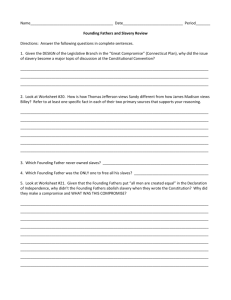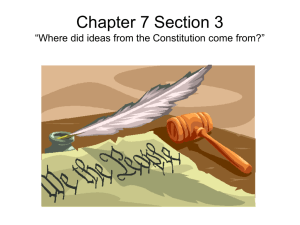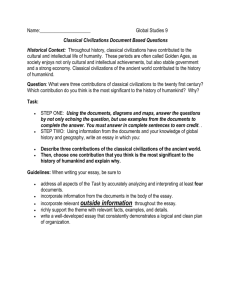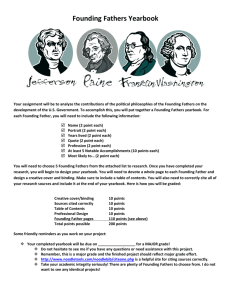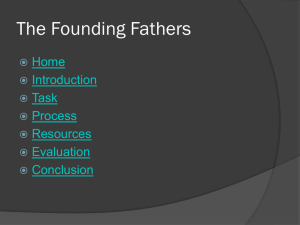Influence of Rome Powerpoint
advertisement
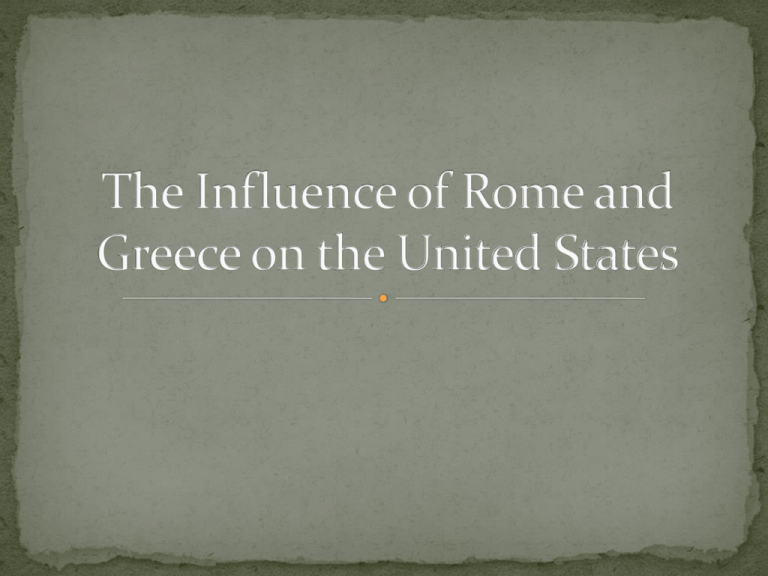
Objective: •Students will analyze ancient civilizations (Rome) and empires in terms of their development, growth and lasting impact. •Analyze the governments of Rome and the United States in terms of their development, structure and function within various societies (e.g., theocracy, democracy, republic, oligarchy, tyranny, aristocracy, etc.). •Evaluate the achievements of Roman civilizations in terms of their enduring cultural impact. Influences Students will view a 3 minute video clip in which various NBA players comment on Michael Jordan’s influence on the game of basketball. What governments of the ancient and classical world were similar to that of the United States? http://www.youtube.com/watch?v=vGKeWOqDa_s • Students will compile a list of their favorite books, movies, music, and television shows. • Students should write down a couple of choices for each category. The teacher should – encourage students to think about items they feel have had an influence on them and not just choose the first item that comes to mind. The list should be compiled on a separate piece of paper – Notate why these works have influenced you Favorite Books Movies Music Lord of the Rings John Adams Pink Floyd the Dark Side of the Moon (Perseverance, (An interesting the importance look into the of friendship, founding fathers (A look into the and the power of and the birth of human will) America) condition.) Television Show Battlestar Galactica Reimagined Series (Must be worthy to survive) Favorite Books Movies Music Television Show Those we term as our Founding Fathers were faced with a government that just wasn’t working following independence from Great Britain. The Articles of the Confederation had to be revised or a new government created all together. The United Sates Constitutional Convention which took place from May 14 to September 17, 1787 was the ‘bridge’ to get the Founders over ‘troubled water’. The result of the Convention was the United States Constitution. The government that emerged in 1787 has proven to be among the greatest that has been fostered. Was the United States Government an experiment engineered by our Founding Fathers or a proven product of the Classical minds? In this lesson, students will explore the extent of the influence of Rome and the Classical thinkers on the founding Fathers. The primary and secondary source documents will guide them in this question. Students will utilize the inquiry approach as they analyze the documents, develop a thesis and draw conclusions based on the evidence. Document Activity PART A 1. Students will sit at a station no more than 4 individuals per group 2. Students will explore documents and pictures and answer questions in complete sentences on their answer document. 3. Students will have 6 minutes at each station 4. When the timer sound and students will move counter clockwise around the room. • Place documents in the middle of the station and move with your answer document 5. Station 9 is the make up station! • PART B Write a well-organized essay that includes an introduction, several paragraphs, and a conclusion. Use evidence from at least four documents in the body of the essay. Support your response with relevant facts, examples, and details. Include relevant outside information. Task: Using information from the documents and your knowledge of social studies, write an essay in which you: Essay Question: Describe at least three similarities between the government of the ancient Roman Republic and United States of America and conclude whether the United States Government was an experiment engineered by our Founding Fathers or A proven product of the Classical minds? Guidelines: In your essay, be sure to: • Address all aspects of the Task by accurately analyzing and interpreting at least four documents • Incorporate information from the documents in the body of the essay • Incorporate relevant outside information • Support the theme with relevant facts, examples, and details • Use a logical and clear plan of organization • Introduce the theme and conclude with a summation of the theme Citation of Sources Station 1: Source: McDougal Littel, World History: Ancient Civilizations (Houghton Mifflin Harcourt Publishing Company) page 157 Station 2: Source: McGraw-Hill, World History: Journey Across Time, The Early Ages page 264 Station 3: Source: Fears, Rufus J. Famous Romans, 2001. Page 8. Station 3: Source: Emperor Claudius, Annals (11.23) as recorded b Tacitus, A.D. 48. Retrieved from http://fjor.net/etome/grecoroman/tacitus-gallia.html Station 4 Source: The Twelve Tables. Retrieved from http://www.csun.edu/~hcfll004/12tables.html Station 5: The Bill of Rights. Retrieved from http://www.usconstitution.net/const.html#Am1 Station 5: 12 Tables From: Oliver J. Thatcher, ed., The Library of Original Sources (Milwaukee: University Research Extension Co., 1901), Vol. III: The Roman World, pp. 9-11. Scanned by: J. S. Arkenberg, Dept. of History, Cal. State Fullerton. Prof. Arkenberg has modernized the text. Station 6: Source: McGraw-Hill, World History: Journey Across Time, The Early Ages page 271 Station 7: McDougal Littel, World History: Ancient Civilizations (Houghton Mifflin Harcourt Publishing Company) page 157
